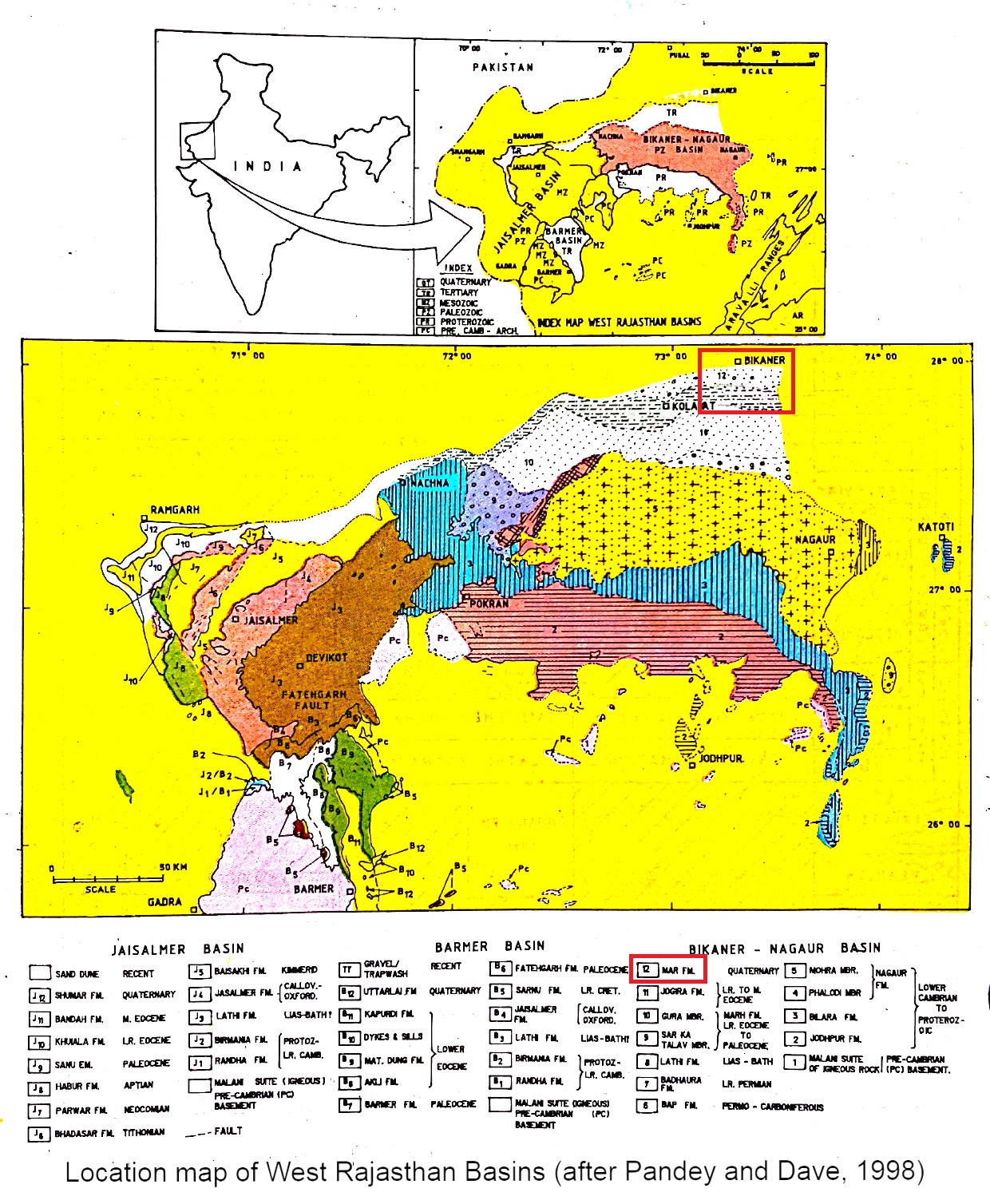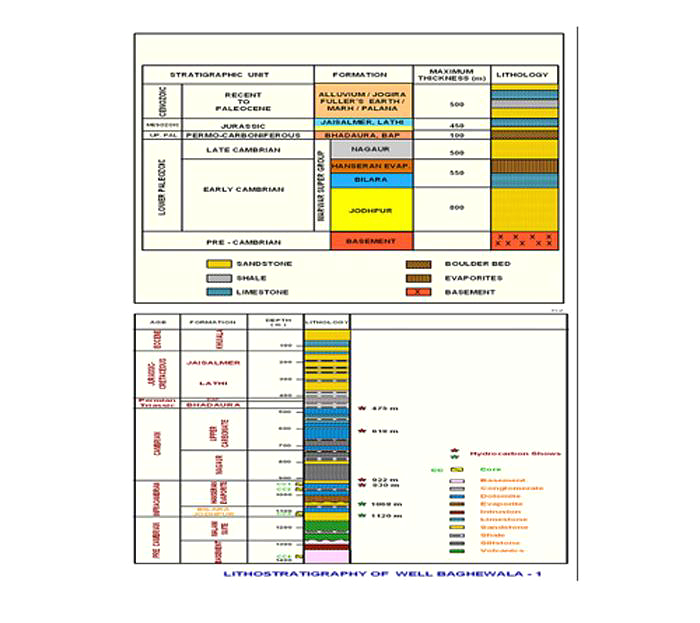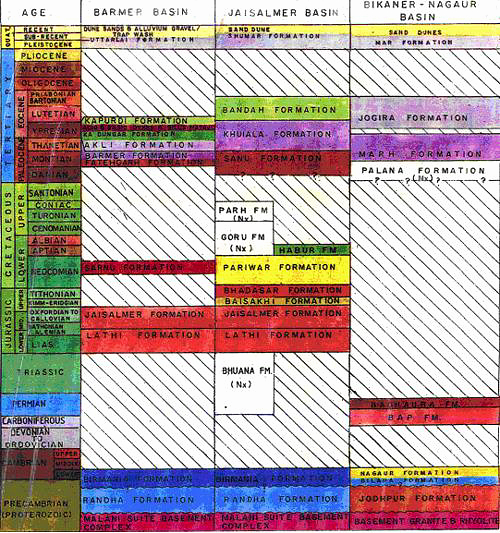Mar Fm
Type Locality and Naming
OUTCROP: Good exposures are seen around Mar village. The name was proposed by Shrivastava and Srinivasan (1962) to a litho unit consisting of ferruginous grit, conglomerate and sandstone exposed in cuestas. [Original Publication: Shrivastava, B.P., and Srinivasan, S., 1962: Geology of the area around Bap Nagaur, Western Rajasthan: Progress Report for the year 1961-62. ONGC Report (Unpublished)],
[Figure 1: Location map of West Rajasthan Basins (after Pandey and Dave, 1998)]
Lithology and Thickness
Conglomerate to Soil. In type section, the sediments of Mar Formation in ascending order comprises poorly consolidated, crudely stratified conglomerate, gritty sandstone and ferruginous sandy clays, recent lime Kankar, lateritic soil, gypsite, calcite and windblown sand. In well Pugal-1, the formation is 100 m thick and is represented by unconsolidated fine- to medium-grained sand which is occasionally gritty with calcareous concretion.
[Figure 2: Generalized and Subsurface Stratigraphy of Bikaner-Nagaur Basin ((from dghindia.gov.in)]
Relationships and Distribution
Lower contact
Upper contact
Upper boundary is covered by recent sand and sand dunes.
GeoJSON
Fossils
No mega or microfauna/flora have been reported from this formation. Saproo et al., (1977) have reported reworked fossils of Jogira Fm from the conglomerate near Jogira Talao.
Age
Depositional setting
Additional Information


